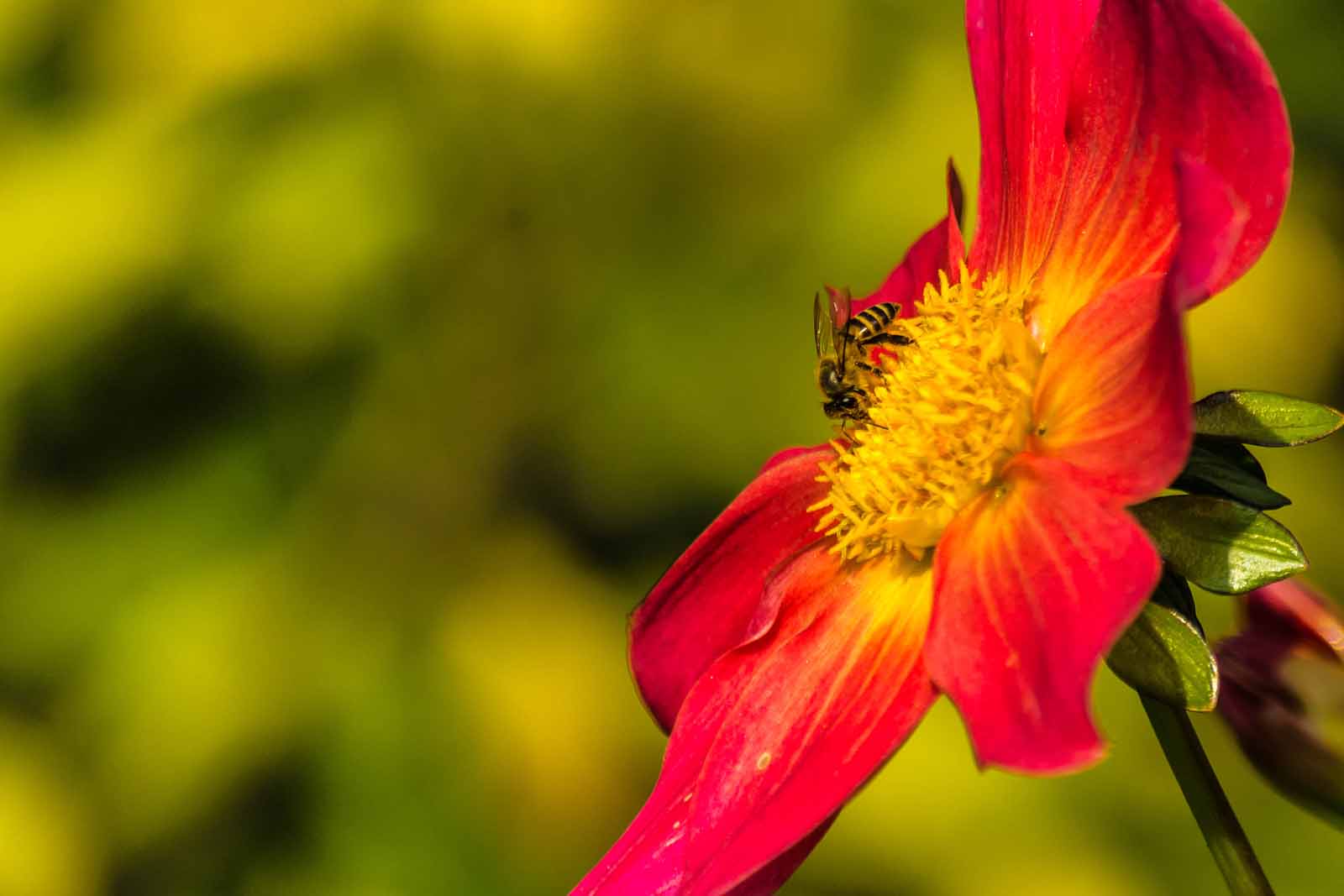Honey bees provide solutions to Scotland's sticky social issues
There's a distinct buzz about the work of Paul Holmes, chair of the Kilsyth Community Market Garden and acting coordinator of Kelvin Valley Honey. It's as loud as the sound of 20,000 bees in your garden courtesy of a Kelvin Valley Honey starter kit. And it's as meaningful as a range of honey-based products carefully produced by people who no longer have the physical capacity to leave their homes.
Paul Holmes and his team at Kelvin Valley Honey are on a mission to improve the quality of life of people by improving the life chances of bees.
Kelvin Valley Honey is an initiative of Kilsyth Community Market Garden a company limited by guarantee with charitable aims owned and managed by residents of the Upper Kelvin Valley. It was set up in 2011 with grant funding.
As coordinator, Paul takes on a multitude of tasks from “funding and finance” to “sales, marketing, product development and everything else that goes with it” in an effort to use social enterprise to prevent the rapid decline of the honey bee population in Scotland.
The big bee problem
A survey on behalf of the Scottish Beekeepers Association found that in 2013 just over 30% of managed honeybee colonies in Scotland had failed to survive the previous winter, which was almost double that of the amount lost in 2012.
Across the Atlantic, Greenpeace reports that winter losses in the US commonly reach between 30-50% and sometimes even more. So bees are dying – why should we care?
Honey bees perform approximately 80% of pollination worldwide. This includes the pollination of 70 of the top 100 human food crops, which supply about 90% of the world’s food.
In a 2013 business report, Paul Holmes writes that Scotland’s honey bee population, “declined by 60% in the past five years and continued to fall by 15% annually – threatening the sustainability and financial viability of Scotland’s agricultural sectors and the natural environment.”
 A pollinating honey bee. Photo credit: Flickr
A pollinating honey bee. Photo credit: Flickr
Concerned volunteers from Kelvin Valley Honey provide educational resources to increase the numbers of schools and community groups being trained and equipped to become beekeepers. The organisation also loans them hives and provides starter colonies of 20,000 honey bees.
More than happy to get their hands dirty, the volunteers are involved in the “creation of additional honey bee foraging habitats – delivering planting and operations of derelict land, such as former industrial sites” explains Paul.
Honey in hot demand
Kelvin Honey produces honey-based skincare products, cosmetics, confectionary, beverages and household goods, which are then sold in a network of 126 independent retailers – such as delicatessens or butchers.
"We took the decision to only sell our products through independent retailers because they are under threat from the big supermarkets and we saw this as a way of supporting them," says Paul.
During the first year that the business operated retail sales reached £15,000. This figure has risen at a staggering rate, with sales amounting to £220,000 in the last financial year. Paul also reveals that the company is recording a 46% growth on top of that figure so far this year.
| 249/1343 on the Growth Index |
| 9/57 for growth in Scotland |
| 24/160 for growth in the regeneration and community development sector |
| 9/10 impact measurement score |
Check out Kelvin Valley Honey's full RBS SE100 profile on the data platform
Kelvin Valley Honey works in a number of ways to support Scottish communities. One key aim is “to reduce the isolation and improve the quality of life and incomes of people who are housebound through either long-term disability or life limiting illnesses," Paul explains. To support the livelihoods and social lives of people who are housebound, Kelvin Valley outsources the production of some of its consumer products to a network of individuals.
I’m not sure if we’d describe it as a formal approach…but we find that its effective – it provides us with a snapshot and an overview of how what we’re doing is effecting people and communities.
These individuals become a part of the Kelvin Valley Honey supply chain and also “receive up to 21 hours of social support provided by volunteers on a training programme". The programme eventually secures the volunteers with qualifications in social care. Community integration events are also organised by Kelvin Valley Honey to try and get people out of the house more.
A concise social impact measurement strategy is not yet in place at Kelvin Valley Honey, but rigorous informal system is being used successfully to record the effectiveness of the different elements of the honey initiative. Paul admits: "I’m not sure if we’d describe it as a formal approach…all of the people involved or engaged with the organisation undergo a monthly review session with their particular supervisor and support worker.
The people involved in community integration work are asked their views on "how being involved with the organisation has improved the quality of their life etc. For other people we run a quarterly questionnaire and open group meetings, which are open to any member of the public. So it’s not a magically formularised structure but we find that its effective – it provides us with a snapshot and an overview of how what we’re doing is effecting people and communities."
Parliamentary hives
Adding political weight to their work and the seriousness of the environmental issue, Paul and his team of volunteers have teamed up with the Scottish Parliament to locate two Scottish bred honey bee colonies in the Parliament's grounds. The hives have been paid for with the profits made from the sale of Kelvin Valley Honey's products and it is hoped they will raise public awareness for the plight of the bees.
More plans are afoot to expand the business even further with an online retail shop purely for Kelvin Valley Honey products being launched in the coming months – hopefully in time for the Christmas shopping rush!
Photo credit: Flickr



